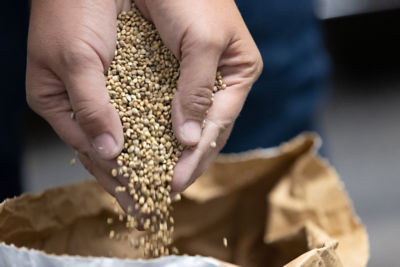Causal Agent
Alternaria alternata f.sp. cucurbitae, Botrytis cinerea, Choanephora cucurbitarum, Fusarium spp., Lasiodiplodia theobromae, Myrothecium roridum, Penicillium digitatum, Phomopsis cucurbitae, Phytophthora spp., Pythium spp., Rhizoctonia solani, Rhizopus stolonifer, Trichothecium roseum and other fungi.
Distribution
Worldwide
Symptoms
Symptoms vary depending on environmental conditions and the fungal fruit pathogen(s) present.
 Internal symptoms of Fusarium sp. in melon fruit.
Internal symptoms of Fusarium sp. in melon fruit.
 Botrytis cinerea infection on cucumber fruit.
Botrytis cinerea infection on cucumber fruit.
Conditions for Development
Fruit-rotting fungi enter fruit when the fruit contact damp soil. Wounds and attached blossoms are also points of entry for fruit-rotting fungi. Fruit are more likely to be infected when relative humidity is high or if free moisture is present on fruit surfaces. Chilling damage also makes fruit more susceptible to infection by fruit-rotting fungi.
Control
Crop management practices that prevent fruit contact with the soil surface, reduce fruit injury especially during harvest and packing, and reduce post-harvest free moisture on fruit surfaces will help decrease fruit rot incidence. In some cases post-harvest application of fungicides may help reduce fruit rot losses. Post-harvest treatment of fruit with hot water and fungicides show limited success in controlling latent infections.



